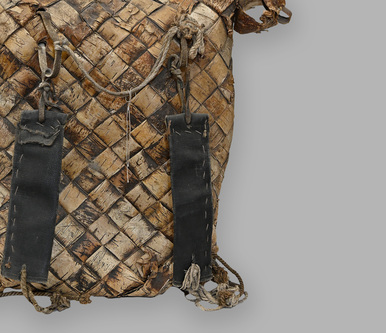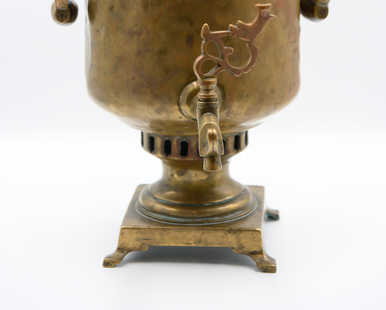The exhibition of the Polyarny Museum of History and Local Lore presents a typical item of Pomory fishery in the Russian North — a kukhtyl, which is a sealed hollow glass ball that was used as a fishing float for seine and drag nets to keep them afloat. Such floats were widely used from the middle of the 19th century until the invention and mass production of plastic and aluminum floats and buoys.
Filled with a large volume of air, the glass kukhtyl float had a large carrying capacity, good buoyancy on the surface of the water and was clearly visible, unlike traditional wooden or cork floats, which turned dark when moist. Usually, there were dozens of kukhtyl floats attached to the net, and their size depended on the size of the net — from 15 cm in diameter to half a meter or more.
Kukhtyl floats were in great demand. They were made in numerous glass-blowing workshops in the cheapest and fastest way from recycled glass. Often the glass itself was filled with bubbles and different colored specks. They rarely had a perfectly even shape. Like any glass product, kukhtyl floats were fragile. For reinforcement, the fishermen braided such floats with strong ropes then attached them to the top of the net at even intervals. For heavy nets, several floats were sometimes tied together as one float.
The kukhtyl float on display
belonged to Y. Popova, a resident of the Umba
village in the Tersky district of the Murmansk Oblast; she got it from her Pomory parents. It was
possibly made in the Umba village or bought at a fair in the early 20th century. The kuhtyl float was
made of recycled bottle glass of marsh green color (with a few small air
bubbles inside the walls of the glass) in the free-blowing method. This method
implies that the glassworker inflates the molten glass by blowing air into it
through a blowpipe, which they rotate to achieve the desired shape. The place
of the cut is sealed with a glass button 5 cm diameter with an uneven sealing
edge. Glass floats that slipped out of their braid many years ago can still be
found on sea and ocean shores, especially in uninhabited places.



